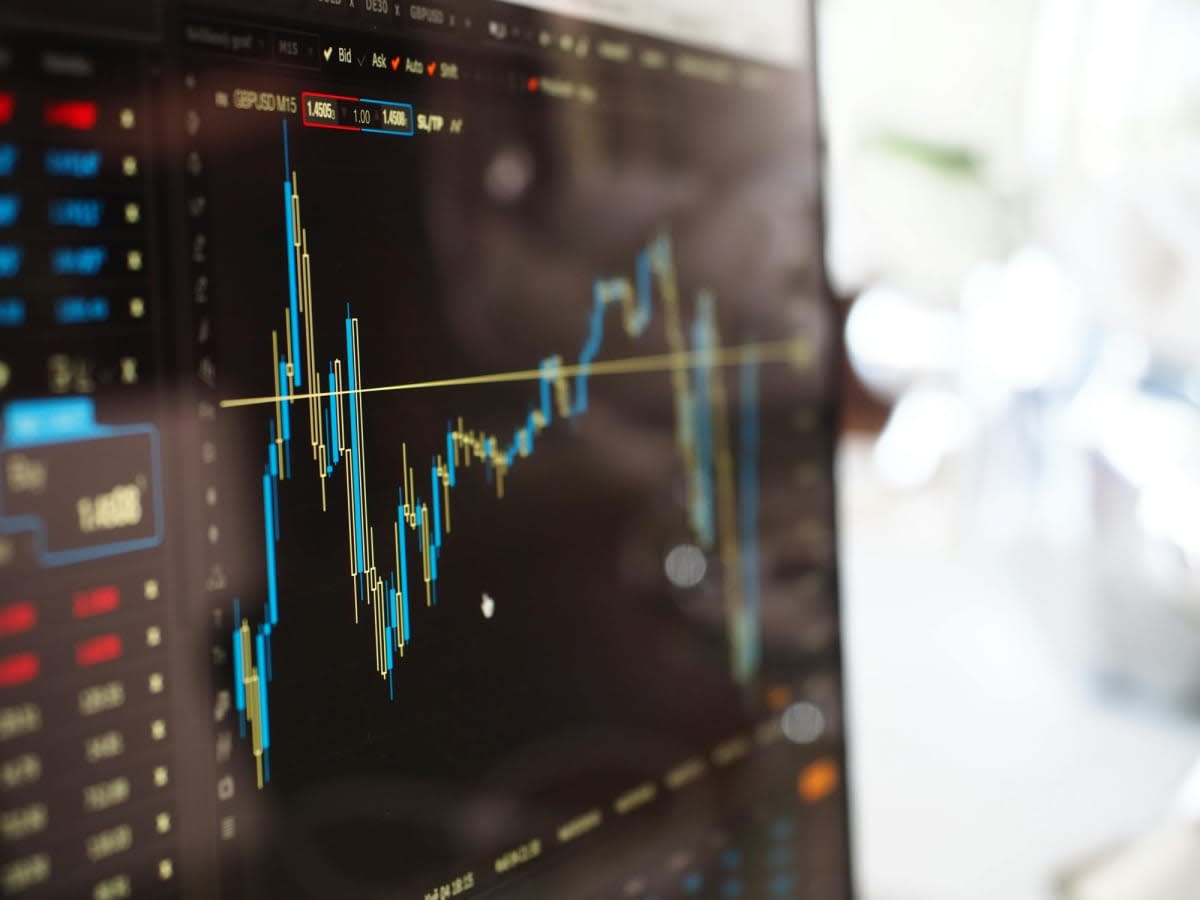Invest
Trump, the US and the economic implications for 2017
There’s no doubt that US President Trump will continue to dominate headlines and the global economy this year, but it’s unlikely to be as positive as some have suggested.
Trump, the US and the economic implications for 2017
There’s no doubt that US President Trump will continue to dominate headlines and the global economy this year, but it’s unlikely to be as positive as some have suggested.

US economic outlook
While there appeared to be little change in the US Treasury (UST) yield curve between 2015 and 2016, 2016 was really a story of two volatile halves. The total return of the 30-year UST was a whopping 44.9 per cent from 31 December 2015 to 7 July 2016 and an incredible -31.6 per cent from 7 July 2016 to 31 December 2016.
The US is now close to the Federal Reserve’s unemployment and inflation mandates, with Fed chair Janet Yellen saying, “Fiscal policy is not obviously needed to provide stimulus to help get us back to full employment.”
The market has embraced the optimism that US growth is going to get better and fiscal policy is going to help charge growth. The market is taking the Fed seriously, at least for 2017, and, we believe, may be taking things too far too fast. We feel it is important to see which of the new administration’s policies are enacted and what will actually develop as opposed to embracing the idea that the entire agenda will be implemented right off the bat.

Looking at the Trump’s proposals, tax reform is likely to be an early focus, but outstanding questions remain. Which loopholes will be closed? How will foreign profits be treated? Will there be more significant changes to structure of corporate taxes (e.g. taxing imports, deductibility of interest payments)? Trump has proposed looser fiscal policy, but deficit concerns may constrain the size of fiscal easing. In terms of trade policy, Trump pledged to name China a currency manipulator and suggested he would renegotiate NAFTA. This could be very disruptive to growth given the gross amount of US exports and imports of goods.
US manufacturing has been in the doldrums and we don’t think a turnaround is possible in just one or two years. We think it’s more of a five-year process.
With inflation break evens just now reaching 2 per cent, we think inflation expectations are not suggesting anything other than ‘gradual’ in terms of Fed policy.
Another reason we don’t think US rates will be surging upward in 2017 is because attractive spreads over Japanese and European government bond yields will limit the upside for long-term UST yields.
Investment implications
We believe investment-grade credit should offer attractive income in 2017, but we have trimmed the overweights across all spread products because the valuations are not as attractive as they were last year. We remain constructive on banks.
US credit spreads appear attractive at long-term averages given our economic outlook.
In high yield, valuations are on the tighter side and we intend to have smaller overweights while remaining thoughtful about positioning and quality ratings. There is a strong case to be made for high yield and we expect better earnings in 2017, particularly for energy companies. In addition, the prospects for corporate tax reform are positive.
We believe the US mortgage-backed bond sector continues to look attractive on a risk-adjusted basis. Consumer and housing fundamentals remain constructive, US house prices are projected to grow at 2 to 3 per cent over the next 12 months and the pent-up demand for housing should be a positive.
In EMs, valuations look attractive on a historical basis and relative to developed markets. While the possibility of protectionism and border taxes can be difficult, the spread between EMs and developed market continues to be near the wides we saw in the financial crisis. EM balance sheet strength continues to be a pillar of support. We intend to remain thoughtful about opportunities in the EM sector. We continue to like Russia, India, Brazil and Mexico.
Global outlook for 2017
In terms of watching elections, the one we are looking at most carefully is in France. From our perspective, a Marine Le Pen victory would be challenging for the EU, its need for cohesion and its desire to help the periphery perhaps, mildly, at the expense of the core.
While some of our competitors are calling for an end of the UST bull market, we recall that many people have called for the end of the UST bull market over the last 35 years and we are still waiting. Our thought is that this bull market should be coming to an end, and if we are right, and the global recovery does remain ongoing, over time we will see interest rate normalisation and inflation normalisation. It’s been a long time coming, however, and it’s slow.
We have been maintaining slight underweights in both the euro and the yen, particularly the yen. Given the enormity of the move up in US dollar and the move down, we reduced those positions a little bit, but that really was the aftermath of the US dollar’s rally post-election. As a value investor, our style tends to be to reduce positions after big price increases and vice versa.
Thinking about a slow global environment and the negative correlation between USTs and spread product, duration can be a powerful portfolio tool to help mitigate downside risks when you get bad news about growth or that some crisis has occurred. It continues to be an important positive portfolio tool.
Our strong view is that duration is an effective complement, given the negative correlation between bonds and stocks or spread products and fixed income. We do not believe that we are moving into a highly inflationary US and global economy. We think that turning the global inflationary environment around will continue to be a slow process.
Ken Leech, chief investment officer, Western Asset

Stock market
6K Additive secures A$48 million through initial public offering on the Australian Stock Exchange
6K Additive, a prominent player in the advanced metal powders and alloy additions market, has made a significant stride by successfully completing its Initial Public Offering (IPO) on the Australian ...Read more

Stock market
Institutional investors increase stock allocations to 18-year high amid cautious market shifts
In a recent development, State Street Markets unveiled the findings of its latest State Street Institutional Investor Indicators, revealing intriguing shifts in institutional investor behaviourRead more

Stock market
FOREX.com launches in Australia to empower self-directed traders
StoneX Group Inc. (NASDAQ: SNEX) has announced the Australian launch of FOREX.com, expanding access for self-directed traders to a global suite of Contracts for Difference (CFD) products across ...Read more

Stock market
Westpac and CMC Markets strengthen partnership to enhance online trading services
In a significant move that underscores the evolving landscape of online trading in Australia, CMC Markets Stockbroking has been chosen as the preferred vendor by Westpac Banking Corporation to extend ...Read more

Stock market
Portfolio reviews as an operating discipline: turning volatility into a competitive edge
In a higher-rate, higher-volatility world, portfolio reviews are no longer an annual hygiene task; they’re a core operating rhythm that protects cash flow, unlocks tax alpha, and sharpens risk ...Read more

Stock market
Fee war on the ASX: Global X’s A300 turns up the heat on core Aussie equity ETFs
Global X has lobbed a 0.04% management fee into Australia’s core equity sandbox, launching the Australia 300 ETF (A300) to take on entrenched giants. Read more

Stock market
Challenger IM shakes up the ASX with private credit note and a side of risk
Challenger Investment Management has taken private credit mainstream with an ASX-listed note structure—LiFTs—that secured roughly $100 million in cornerstone commitments within a day of launch. Read more

Stock market
International stocks: Diversifying your portfolio beyond Australia
In an increasingly globalized market, Australian investors have the opportunity to enhance their investment portfolio by incorporating international stocks. Diversifying your investments globally can ...Read more

Stock market
6K Additive secures A$48 million through initial public offering on the Australian Stock Exchange
6K Additive, a prominent player in the advanced metal powders and alloy additions market, has made a significant stride by successfully completing its Initial Public Offering (IPO) on the Australian ...Read more

Stock market
Institutional investors increase stock allocations to 18-year high amid cautious market shifts
In a recent development, State Street Markets unveiled the findings of its latest State Street Institutional Investor Indicators, revealing intriguing shifts in institutional investor behaviourRead more

Stock market
FOREX.com launches in Australia to empower self-directed traders
StoneX Group Inc. (NASDAQ: SNEX) has announced the Australian launch of FOREX.com, expanding access for self-directed traders to a global suite of Contracts for Difference (CFD) products across ...Read more

Stock market
Westpac and CMC Markets strengthen partnership to enhance online trading services
In a significant move that underscores the evolving landscape of online trading in Australia, CMC Markets Stockbroking has been chosen as the preferred vendor by Westpac Banking Corporation to extend ...Read more

Stock market
Portfolio reviews as an operating discipline: turning volatility into a competitive edge
In a higher-rate, higher-volatility world, portfolio reviews are no longer an annual hygiene task; they’re a core operating rhythm that protects cash flow, unlocks tax alpha, and sharpens risk ...Read more

Stock market
Fee war on the ASX: Global X’s A300 turns up the heat on core Aussie equity ETFs
Global X has lobbed a 0.04% management fee into Australia’s core equity sandbox, launching the Australia 300 ETF (A300) to take on entrenched giants. Read more

Stock market
Challenger IM shakes up the ASX with private credit note and a side of risk
Challenger Investment Management has taken private credit mainstream with an ASX-listed note structure—LiFTs—that secured roughly $100 million in cornerstone commitments within a day of launch. Read more

Stock market
International stocks: Diversifying your portfolio beyond Australia
In an increasingly globalized market, Australian investors have the opportunity to enhance their investment portfolio by incorporating international stocks. Diversifying your investments globally can ...Read more








